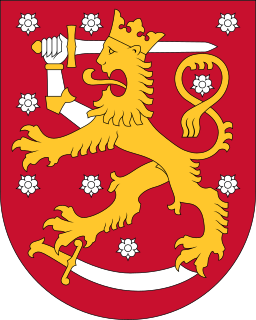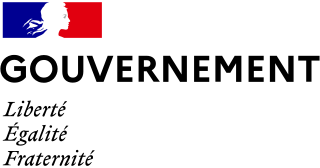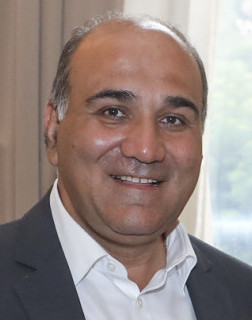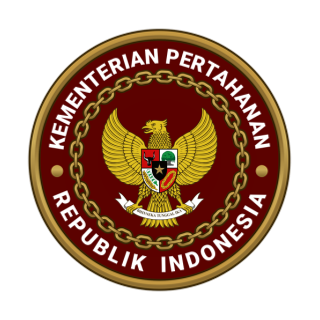 |
|---|
| |
The Republic of Cameroon is a decentralized unitary state. [1]
 |
|---|
| |
The Republic of Cameroon is a decentralized unitary state. [1]
In the Republic of Cameroon, the President of the Republic and the Parliament exercise 'State power' as per Article 4 of the constitution of Cameroon. [2]
'Executive power' is vested in the President and the Government.
A presidential election determines the President of the Republic. The presidential elections take place every seven years and the vote is made through direct, equal and secret suffrage. The President is elected by a majority of the vote cast for a term of seven years in office renewable only one time. (Constitution of Cameroon: Article 6) [3] The president of the Republic defines the policy of the nation, appoint the government officials and other senior administrative officials and define their function with respect to the policy he defines; the President of the Republic put an end to these appointment.
It is the duty of the Government to implement the policy of the nation. (Constitution of Cameroon: Article 11) The Prime Minister and the Council of Ministers lead the government. The Prime Minister is appointed by the President of the republic and the Council of Minister is made of ministers also appointed by the President of the republic on the proposal of the Prime Minister. The powers of the President of the Republic might be delegate by this one to the Prime Minister, any one of the Ministers or senior administrative officials of the State, Minister within their respective agendas.(Constitution of Cameroon: Article 10)
Pursuant to Article 14 of the 1996 Constitution (Law No. 96-06 of 18 January 1996), Legislative power rests with the Parliament which consists of The National Assembly (lower house) and The Senate (upper house). The Parliament has legislative power in matters relating to (a) The fundamental rights, guarantees and obligations of the citizen; (b) The status of persons and property ownership system; (c) The political, administrative and judicial organization; (d) The following financial and patrimonial matters; (e) Programming the objectives of economic and social action; and (f) The system of education in the country – Article 26. However, pursuant to Article 28 of the 1996 Constitution, Parliament may empower the President of the Republic to legislate by way of ordinance for a limited period and for given purposes. Such ordinances shall be tabled before the bureau of the National Assembly and the Senate for purposes of ratification within the time-limit laid down by enabling law.
The numerous administrations existing in Cameroon can be seen as the government in charge of the policy of the nation within the framework of their respective duties.
Originality, the Republic of Cameroon was divided into provinces. The appellation "regions" came with the Amendment of the Constitution of 1996. The regions are the primary subdivisions in Cameroon. Here are the ten regions of Cameroon: Adamawa, Center, East, Far North, North-West, West, South, South-West,Littoral and North .
Considering the fact that the Law No. 96-06 of 18 January 1996 did not yet came into force, a region is under the authority of a Governor appointed by Presidential Decree meaning that the governor represents the authority of the President of the Republic and implicitly upholds the authority of the State in the province/region where he is appointed. Each Ministers assigns to each region a competent provincial delegate in charge of implementing the policy of the state in his province within the framework of the responsibility assigned to their respective Ministerial department. For example, the Minister of Public Health appoints to each province a Delegate in charge of Public Health to coordinate the duty assigned to the Ministry of Public Health at the regional level.[ citation needed ] It is the same for all the Ministerial departments. With the collaboration of provincial delegates, the governor covers the general administration and co-ordination of the work of the civil service in the province, with the exception of those aspects that fall within the remit of the Minister for justice. And we also have to notice that all local government officials are employees of the central government's Ministry of Territorial Administration, from which local governments also get most of their budgets. As the country is subdivided into regions, the regions are subdivided into departments.
There are 58 departments in Cameroon. As in the French model, the capital of a department is called "prefecture" (préfecture in the French language). A department is under the authority of a Prefect (in French préfet) appointed by Presidential decree meaning that the prefect upholds both the authority of the State and implicitly the authority of the region at the local level. Each Ministerial department appoints to each department a departmental delegate in charge of preparing and implementing the policy of the state in his department within the framework of their respective agenda. For example, the Minister of Secondary Education appoints to each department a delegate in charge of secondary education to coordinate the duty assigned to the Ministry of Secondary Education at the local level.[ citation needed ]
We have to acknowledge the fact that the French's word arrondissement is translated "district" in English pose a problem in the context of the subdivisions in Cameroon. Departments are subdivided in "arrondissements", and "arrondissements" are further subdivided in districts. As it is the case for the French's administrative division, the capital of an arrondissement is a sub prefecture (translate in French sous-préfecture). An arrondissement is under the authority of a sub-prefect (translate sous-préfet in the French language) who upheld the authority of the state in the arrondissement.

The politics of Finland take place within the framework of a parliamentary representative democracy. Finland is a republic whose head of state is President Sauli Niinistö, who leads the nation's foreign policy and is the supreme commander of the Finnish Defence Forces. Finland's head of government is Prime Minister Sanna Marin, who leads the nation's executive branch, called the Finnish Government. Legislative power is vested in the Parliament of Finland, and the Government has limited rights to amend or extend legislation. Because the Constitution of Finland vests power to both the President and Government, the President has veto power over parliamentary decisions, although this power can be overruled by a majority vote in the Parliament.

Politics of Lithuania takes place in a framework of a unitary semi-presidential representative democratic republic, whereby the President of Lithuania is the head of state and the Prime Minister of Lithuania is the head of government, and of a multi-party system.

Local government is a generic term for the lowest tiers of public administration within a particular sovereign state. This particular usage of the word government refers specifically to a level of administration that is both geographically-localised and has limited powers. While in some countries, "government" is normally reserved purely for a national administration (government), the term local government is always used specifically in contrast to national government – as well as, in many cases, the activities of sub-national, first-level administrative divisions. Local governments generally act only within powers specifically delegated to them by law and/or directives of a higher level of government. In federal states, local government generally comprises a third or fourth tier of government, whereas in unitary states, local government usually occupies the second or third tier of government.

A prefect in France is the state's representative in a department or region. Subprefects are responsible for the subdivisions of departments, arrondissements. The office of a prefect is known as a prefecture and that of a sub-prefect as a subprefecture.

The prime minister of the Republic of Korea is the deputy head of government and the second highest political office of South Korea who is appointed by the President of the Republic of Korea, with the National Assembly's approval. The prime minister may be a member of the National Assembly, but this is not required to hold the office. The prime minister of South Korea is not the head of government of South Korea, for the President is both the head of state and government in the country.
The Cabinet of Ministers of Ukraine, commonly referred to as the Government of Ukraine, is the highest body of state executive power in Ukraine. As Cabinet of Ministers of the Ukrainian SSR, it was formed on 18 April 1991, by the Law of Ukrainian SSR No.980-XII. Vitold Fokin was approved as the first Prime Minister of Ukraine.

The Cabinet of Egypt is the chief executive body of the Arab Republic of Egypt. It consists of the Prime Minister and the cabinet ministers.

The Government of France, officially the Government of the French Republic, exercises executive power in France. It is composed of the Prime Minister, who is the head of government, as well as both senior and junior ministers. The Council of Ministers, the main executive organ of the Government, was established in the Constitution in 1958. Its members meet weekly at the Élysée Palace in Paris. The meetings are presided over by the President of France, the head of state, although the officeholder is not a member of the Government.

The Mexican Secretariat for Home Affairs is the public department concerned with the country's domestic affairs, the presenting of the president's bills to Congress, their publication on the Official Journal of the Federation, and certain issues of national security. The country's principal intelligence agency, CISEN, is directly answerable to the Secretary of the Interior. The Secretary is a member of the President's Cabinet and is, given the constitutional implications of the post, the most important Cabinet Member. Additionally, in case of absolute absence of the President, the Secretary of Interior assumes the executive powers of the President provisionally. The Office is practically equivalent to Ministries of the Interior in most other countries and is occasionally translated to English as Ministry, Secretariat or Department of the Interior.

The Prime Minister of the Lao People's Democratic Republic, formerly the chairman of the Council of Government of the Lao People's Democratic Republic, is the head of government of Laos. The highest position in the government, they direct the country's executive branch. The prime minister is accountable to the president, the National Assembly and the country's only legal party: the Lao People's Revolutionary Party (LPRP). The current prime minister is Phankham Viphavanh, who was elected in 2021.

The Regions of Cameroon are divided into 58 divisions or departments. The divisions are further sub-divided into sub-divisions (arrondissements) and districts. The divisions are listed below, by province.

The Government of Romania forms one half of the executive branch of the government of Romania. It is headed by the Prime Minister of Romania, and consists of the ministries, various subordinated institutions and agencies, and the 42 prefectures. The seat of the Romanian Government is at Victoria Palace in Bucharest.

The constitution divides Cameroon into 10 semi-autonomous regions, each under the administration of an elected Regional Council. A presidential decree of 12 November 2008 officially instigated the change from provinces to regions. Each region is headed by a presidentially appointed governor. These leaders are charged with implementing the will of the president, reporting on the general mood and conditions of the regions, administering the civil service, keeping the peace, and overseeing the heads of the smaller administrative units. Governors have broad powers: they may order propaganda in their area and call in the army, gendarmes, and police. All local government officials are employees of the central government's Ministry of Territorial Administration, from which local governments also get most of their budgets.

The Council of Ministers is the principal executive organ of the Government of Italy. It comprises the President of the Council, all the ministers, and the undersecretary to the President of the council. Deputy ministers and junior ministers are part of the government, but are not members of the Council of Ministers.

The Chief of the Cabinet of Ministers of the Argentine Nation, more commonly known simply as the Cabinet Chief is a ministerial office within the government of Argentina tasked with overseeing the government's general administration and acting as a link between the national executive and the Argentine National Congress. The position was created by the 1994 amendment to the Argentine Constitution.

The Government of the Soviet Union, formally the All-Union Government of the Union of Soviet Socialist Republics, commonly abbreviated to Soviet Government, was the executive and administrative organ of state in the former Soviet Union. It had four different names throughout its existence; Council of People's Commissars (1923–1946), Council of Ministers (1946–1991), Cabinet of Ministers and Committee on the Operational Management of the National Economy. It also was known as Workers-Peasants Government of the Soviet Union.

The politics of France take place with the framework of a semi-presidential system determined by the French Constitution of the French Fifth Republic. The nation declares itself to be an "indivisible, secular, democratic, and social Republic". The constitution provides for a separation of powers and proclaims France's "attachment to the Rights of Man and the principles of national sovereignty as defined by the Declaration of 1789."

The Ministry of Defense of the Republic of Indonesia, formerly the Department of Defense of the Republic of Indonesia is a government ministry responsible for the defense affairs of Indonesia. The currently-appointed minister is Prabowo Subianto replacing Ryamizard Ryacudu on 23 October 2019.

The Presidency of the Council of Ministers is the administrative structure which supports the Prime Minister of Italy. It is thus the Italian equivalent of the Prime Minister's Office. It contains those departments which carry out duties invested in the office of the Prime Minister. Duties invested in the Italian executive government generally are not administered by the Presidency, but by the individual ministries.

A Ministry of the Republic of Italy is an administrative organ of the Republic of Italy, placed at the top of Italian public administration and is characterised by one or more specific competencies, with an organised structure, often varying over time.
{{cite web}}: CS1 maint: archived copy as title (link){{cite web}}: CS1 maint: archived copy as title (link){{cite web}}: CS1 maint: archived copy as title (link)